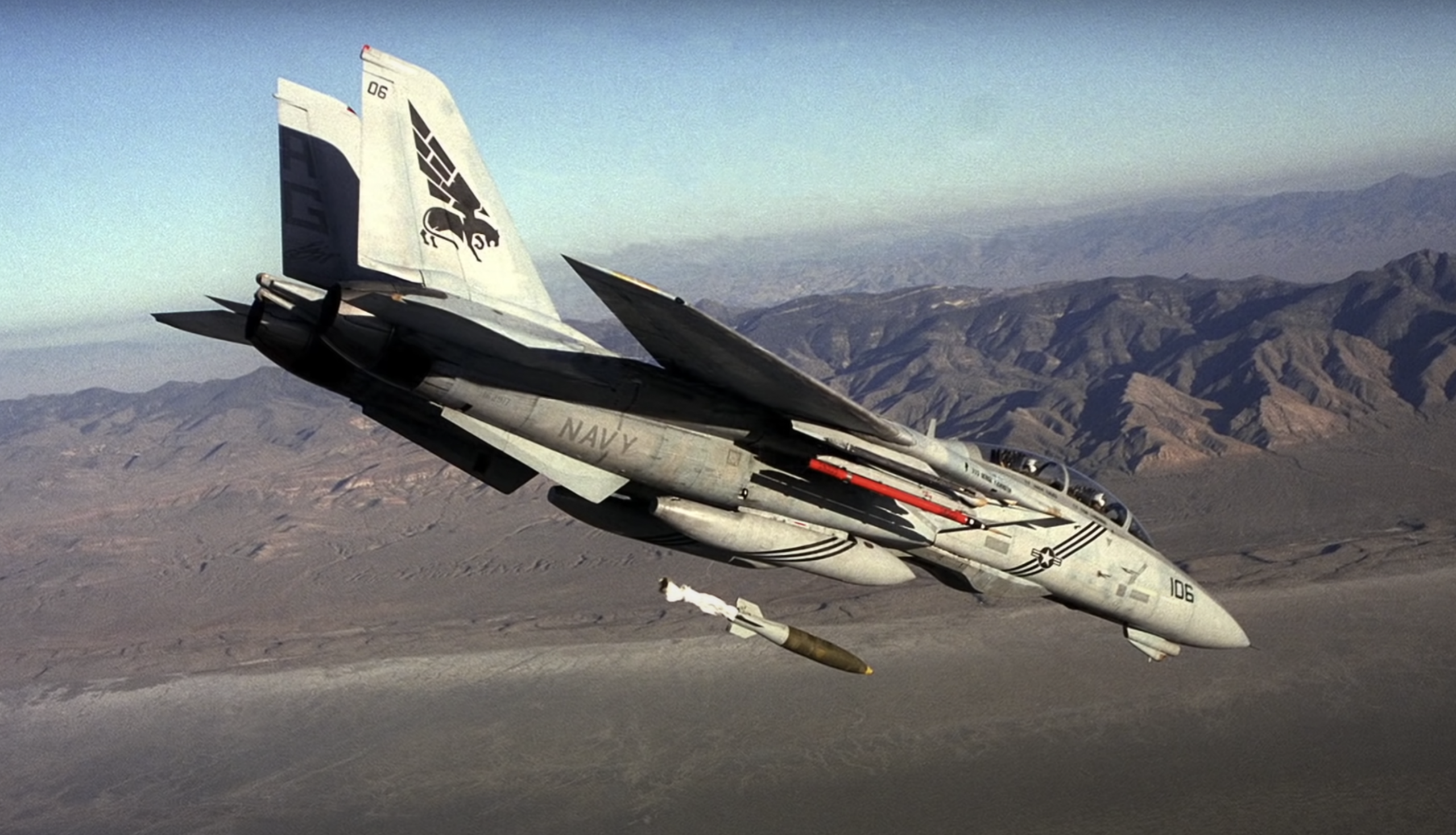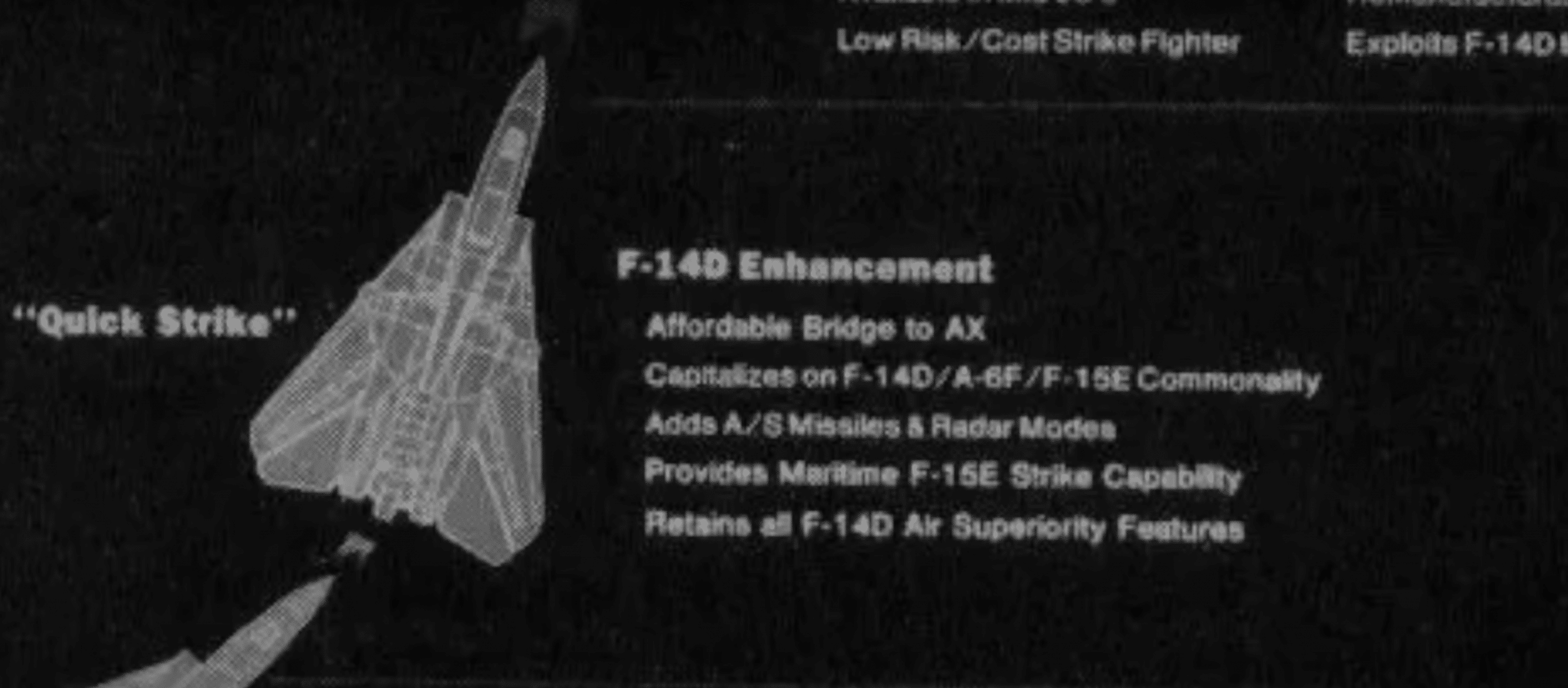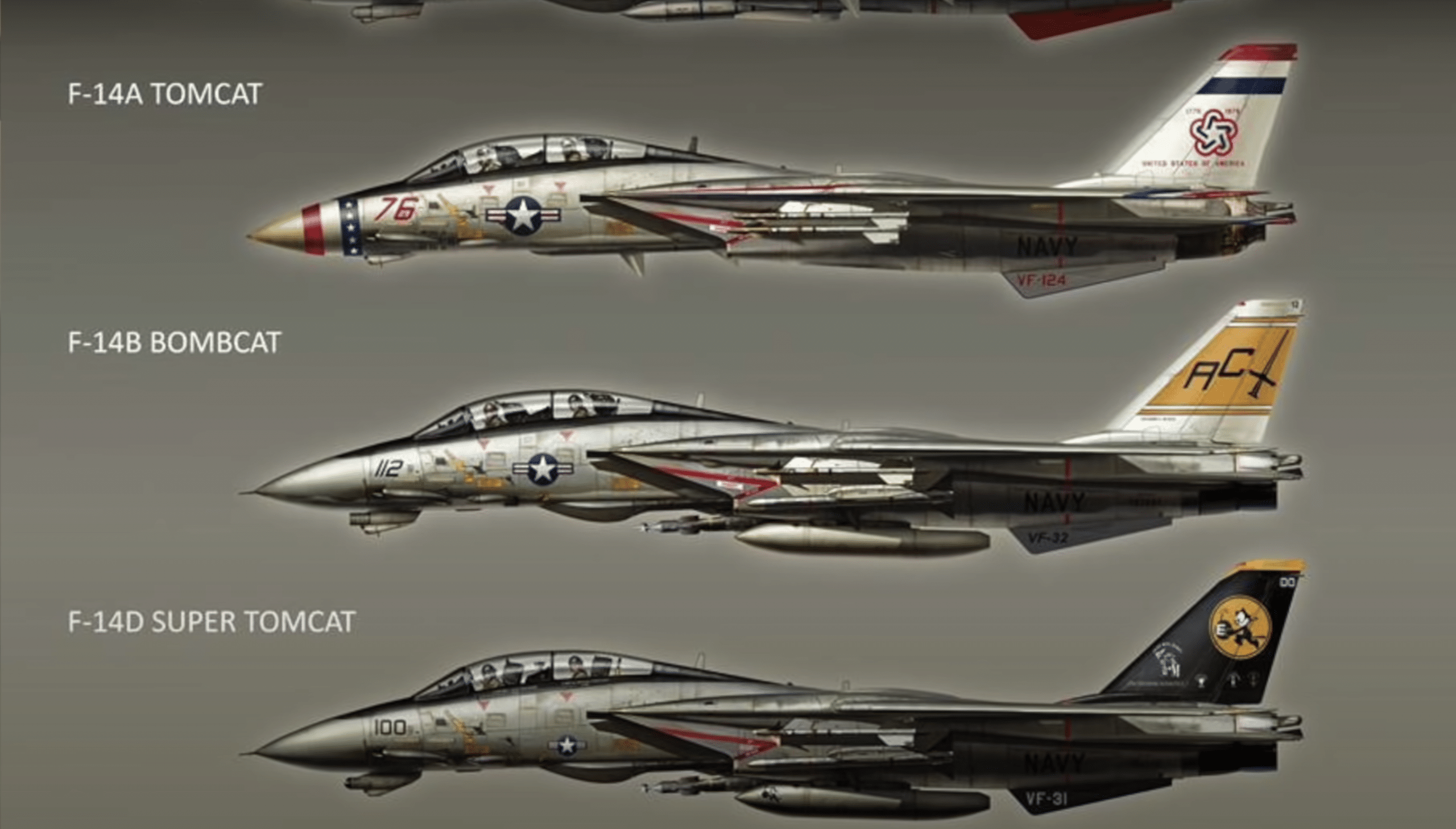At the start of the 1950s, the US Navy was looking for an interceptor that could defend carrier battle groups against the threat of air-to-surface missiles from Soviet bombers and submarines. The Navy wanted a plane with a more powerful radar and longer-range missiles than the F-4 Phantom II.
Origins
The Navy awarded a contract to Grumman – resulting in the Grumman 303 airplane, and continues to refine the design.

Grumman used their 303 design and named their entry “Tomcat,” a tribute to Admiral Tom Conley. Naming it Tomcat was also keeping with the Grumman line of cats like Hellcat, Bearcat, Wildcat, etc.
The Classic Tomcat
Then, the 303 went from a single vertical stabilizer to a twin-tail design, and the look of the classic Tomcat was born.
Grumman got the contract in January of 1969. To save time and avoid cancellation, the Navy skipped the prototype phase and jumped directly into full-scale development. After more than ten years, the US Navy finally had the fleet air defense platform it needed to counter the air threat of the Soviets against the carrier battle group.

Super Tomcat 21
The Super Tomcat 21 grew out of a previous proposal made by Grumman after the collapse of its A-12 program also known as the Quick Strike.

Thus, Grumman introduced to the Navy a true “Super Tomcat,” also known as the Super Tomcat 21.
Formidable Close-in Dogfighter
The plane would have integrated highly logical features that accentuated its attributes, and mitigate deficiencies.
Upgrades done to its engines, slats, digital flight control systems, HUD, windscreen, and other changes in its control surfaces such as its spoilers, would have turned it into a formidable close-in dogfighter.

Would Have Been America’s Most Beloved Jet Fighter
However, the Super Tomcat was too expensive so Congress decided to go with the Super Hornet.
While the Navy got a good plane with the Super Hornet, when it comes to raw performance and other important attributes, it just couldn’t compare with the Super Tomcat 21.



